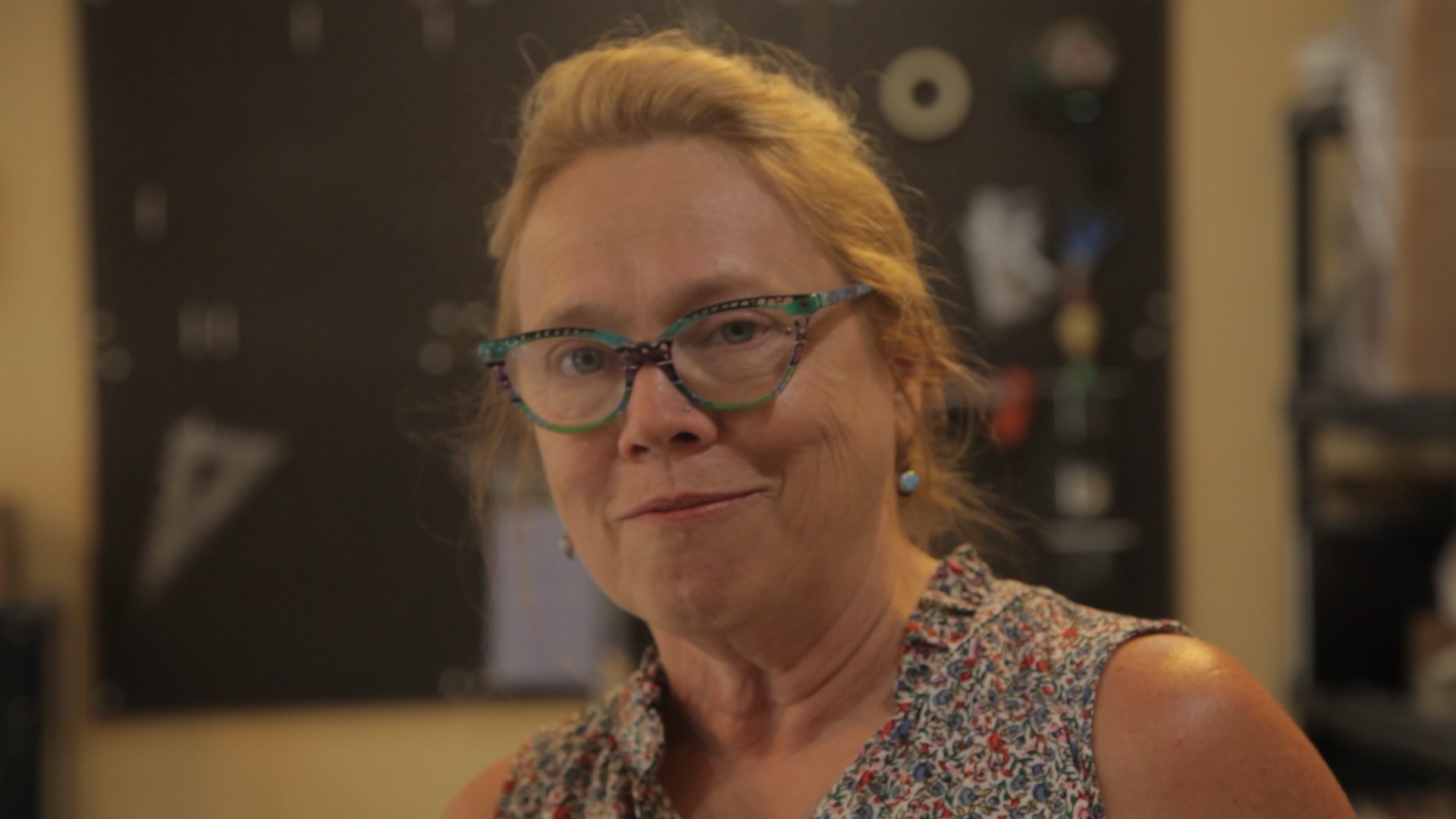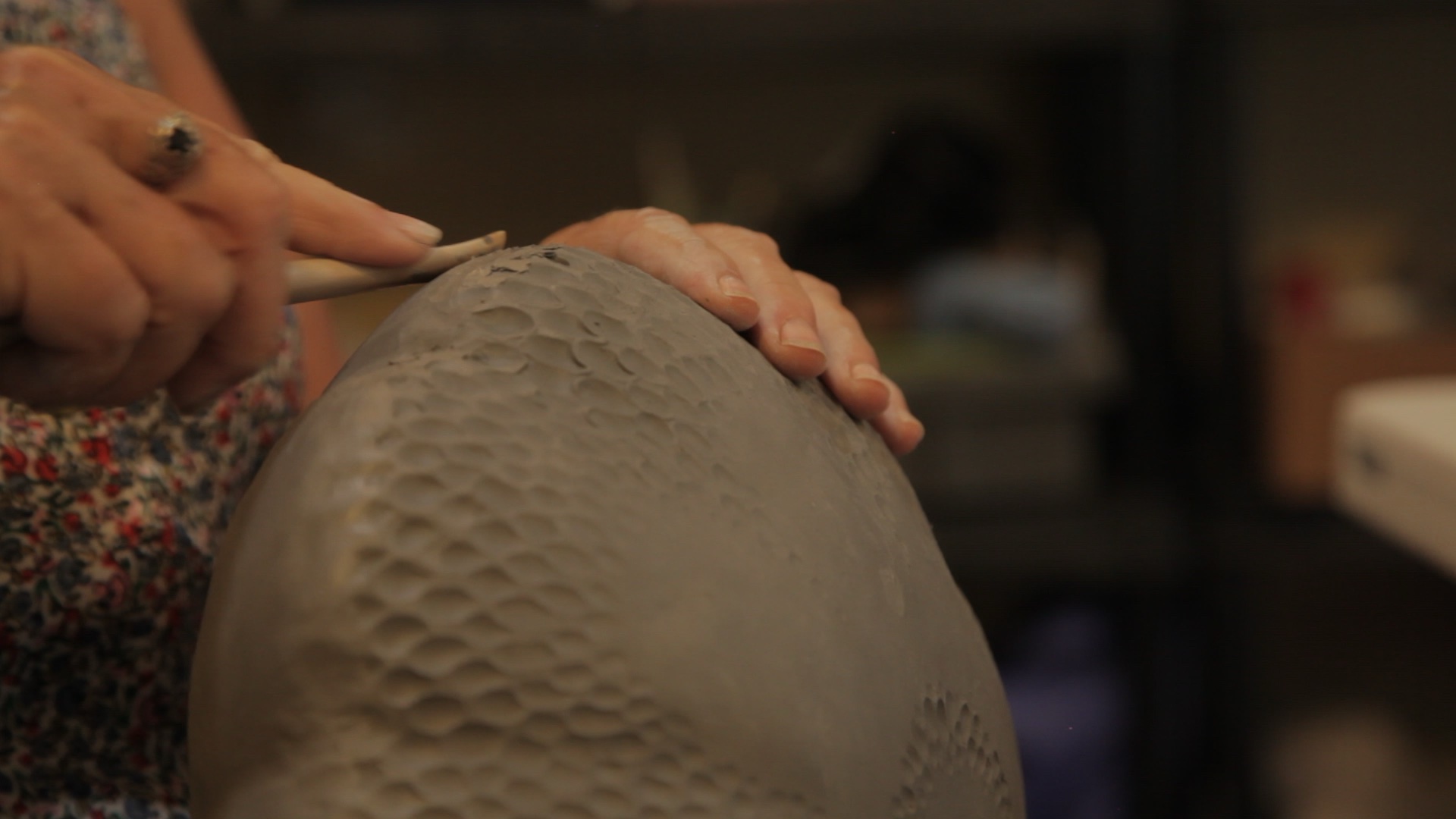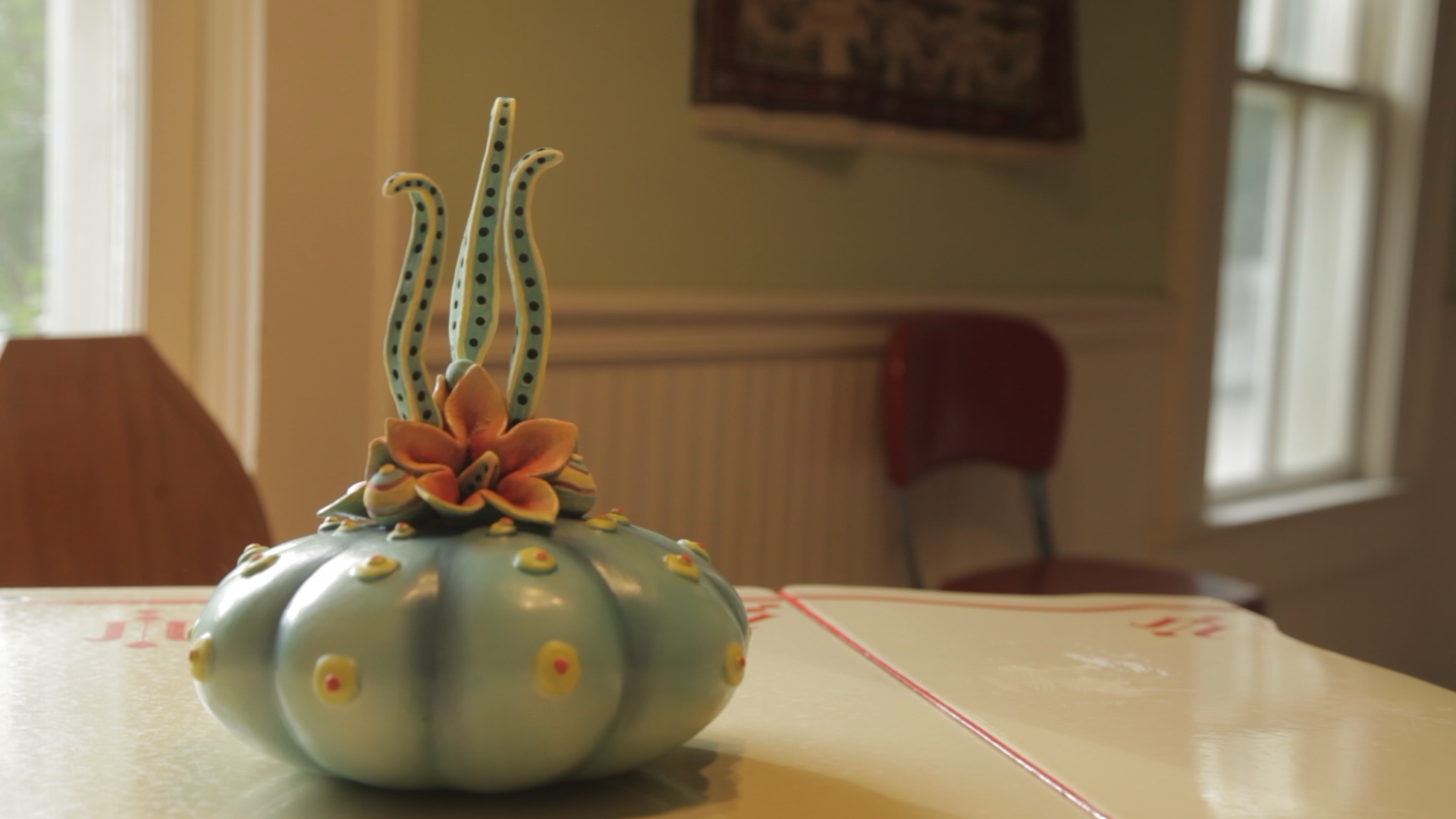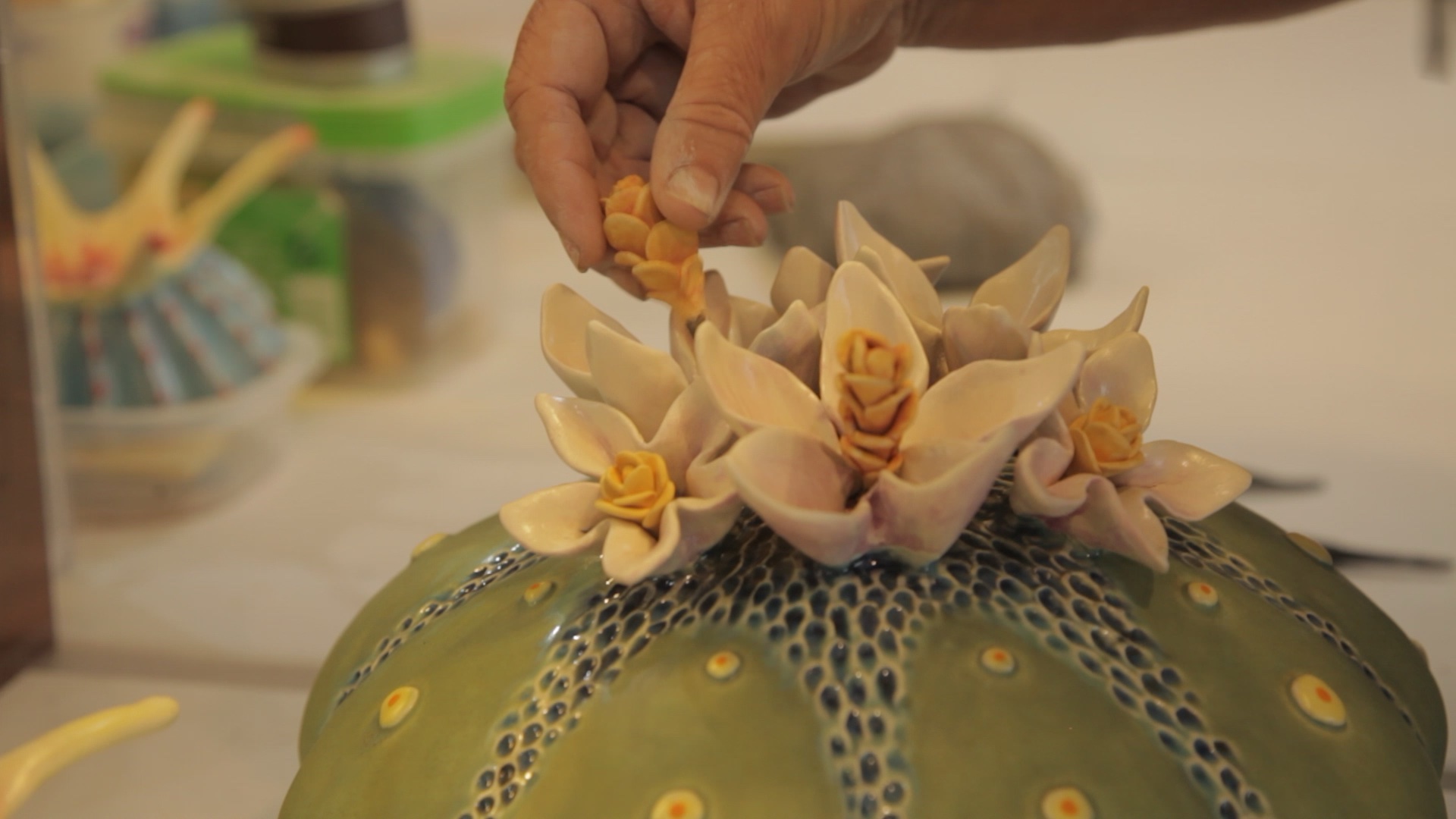Fine Art at the Magnolia 2022
Presents
Beth Garcia
on Learning, Play, and Becoming an Adult
Aug. 13, 2022

|
| Beth in her Studio photo credit: Zoe Alexander |
When I teach art, so much of it is trying to help the kids find out what's important to them. What do they want to make art about? I hope my students will learn how to communicate visually and, of course, experiment with media and really think about that media's connection to their message. I ask my students to do a lot of writing and thinking about the "why." I love teaching high school kids, I feel it's a real privilege to be part of their becoming an adult.
When I was their age, I was less likely to really step off the deep end and try something that I was unsure about. So, I always try to help them find a way to take an artistic risk. With a safety net, of course! For instance, they might be working on a painting and they love it. They know it's not done, but they love how it's going and they are afraid to do anything to ruin the piece. So I'll tell them "okay, let's take a photograph of this as it is right now." Then I'll print it so they can work on top of it, and now they can try it three or four different ways! It's permission to just play, permission to make mistakes.

|
| Beth Sculpting in her Studio photo credit: Zoe Alexander |
I think this relates to my own attraction to clay, because clay is honestly not what I trained for in college. Sculpture gave me permission to express because, well, I didn't really know what I was doing at first! So I would get it wrong, and I'd say to myself "okay, make another one!" This was an important development for me, and it's a lesson that I try to pass along.
In my own college days, I came to art through my biology study. I've always been really interested in biology and I took several courses in it alongside my art studies. I wanted to illustrate for medical textbooks because I was entranced by the patterns of biology, the radial symmetry, and the things I've seen under microscopes. I like to think about how the eyes perceive color and light. They can optically mix colors and the physiological reaction to complimentary colors actually cause structures in the eye to vibrate. This creates a sense of energy that dovetails with my goal to create sculptures that are about vitality and life. I see my sculptures as seeds or seed pods. They are a metaphor representing the many ways we can blossom.

|
| Sculpture displayed in Garcia's Home photo credit: Zoe Alexander |
I'm still a student, a student of nature, and just this weekend I went kayaking and camped along the river. As I was out there, I was always looking at the little plants, the little things on the ground. My most abstract sculptures are based on the microcosms that I encounter.
I hope when people see my work they feel a sense of optimism. You know, one of the things you learn in biology is that when something is dying or degrading it is usually serving other organisms. Even in death there is new life and in my sculpture, and in my teaching, I show my love for those little, essential sparks of life that start out so small.

|
| Fin -- Beth Garcia photo credit: Zoe Alexander |
|
|
Betsy Bohrer, Founder and Curator. Zach Weatherby, Web, Journal, and Accounts. Zoe Alexander, Film and Media Director. Ridley Aligerum, Marketing and Graphic Design. With gratitude to the City of Lakeland department of Parks and Recreation, the Polk Museum of Art, the Polk Arts and Cultural Alliance, and all of our artists, patrons, and guests. |